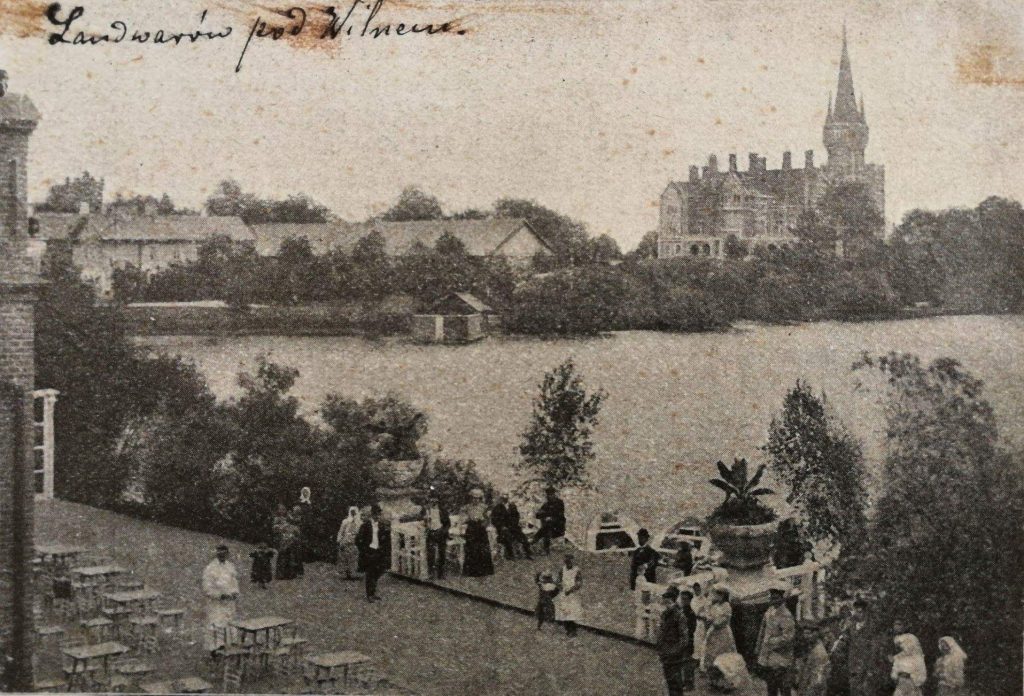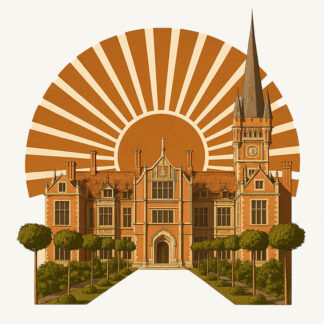During the time of the Tyshkevich counts, Lentvaris not only prospered but was even considered a resort due to its beautiful landscape. Therefore, as befits a true resort, the accommodation and catering of the endless guests were eventually taken care of. This led to the establishment of a hotel and the famous Lentvaris café “Rivjera” at the beginning of the 20th century.
The cafe was located in a newly designed park, in a section called Rivjera. The name is undoubtedly linked to the French Riviera, where the Tyshkevich used to go on holiday, and to the Italian Riviera, which was so popular with Count Vladislav Tyshkevichs, the owner of the Lentvaris Palace at the time. Of course, the Riviera in general, is a resort coastline that frames the water beautifully, and the Riviera of the resort of Lentvaris is also a water-lake-coastline.
Cafe Right on the Lake Coastline
The official name of the cafe was ‘Café Riviera’. A road led to the café via a bridge over the lake stream and around an artificial lake basin. It used a former stone building with marble columns of a female figure – the caryatids. Initially, before there were any other staff, the food was prepared by the head chef of the palace, so the Tiškevičius themselves also ate here, but in a separate room.
Within the first month of its foundation, the Riviera had already become a favorite and very convenient destination for excursions to the countryside.
It was believed that Vladislav’s parents had been driven away from Lentvaris by the never-ending hustle and bustle of the constant flow of visitors, but Count Vladislav himself was determined to attract even more people to Lentvaris by setting up the café.
Therefore, during the rainy season, he came up with all kinds of entertainment in the vicinity of the café. “The owner spares no expense and no effort to make sure that his visitors enjoy their stay. So occasionally, Café Riviera comes up with something new and sympathetic. One of the first ideas was an amateur bicycle race”, recalls one witness.

An eight-piece ensemble in Neapolitan costumes, singing and dancing to Italian hits, worked there all season long. The famous illuminated boats representing St. Mark’s Square in Venice also entertained visitors of the cafe. And finally, a theatre made out of a disused summertime arena.
The railway was used by various acting troupes that came here and went to Palanga. When offered by the Tyshkevich, they readily agreed to perform, often in exchange for a stay and a holiday. People came to the café and the theatre from Vilnius and further afield. Count Tyshkevich made sure that local people also saw the plays: cobblers, seamstresses, milliners, and craftsmen were given tickets for a job well done, and all the children were able to watch the rehearsals of the plays that suited them.
Like the manor house, the idyll of entertainment collapsed as a result of the wars. For a while, a café operated in the other still-standing building. Then the whole ensemble was devastated once again in our time.
As a remote building from the palace, attempts were made to sell the café separately, concealing the fact that this part of the palace, as a whole, is also listed as a cultural heritage site. In the end, everything is back in the hands of one owner, and it is up to him to decide whether the Lentvaris Café and the entertainment that surrounds it will be revived, at least to some extent.
Sources and Literature:
- Filiptovki, Piotr. Memoirs of Zofija Tiškevičiūtė Potocka. From Karta, 2004, no. 4.
- Narkovič, Liliana. The Lentvaris Tiškevičiai, manuscript, translated from Polish by Jolita Karčevska-Rus, 2018. Translated from: Narkowicz, Liliana. Tyszkiewiczowie rodem z Landwarowa, 2013.



